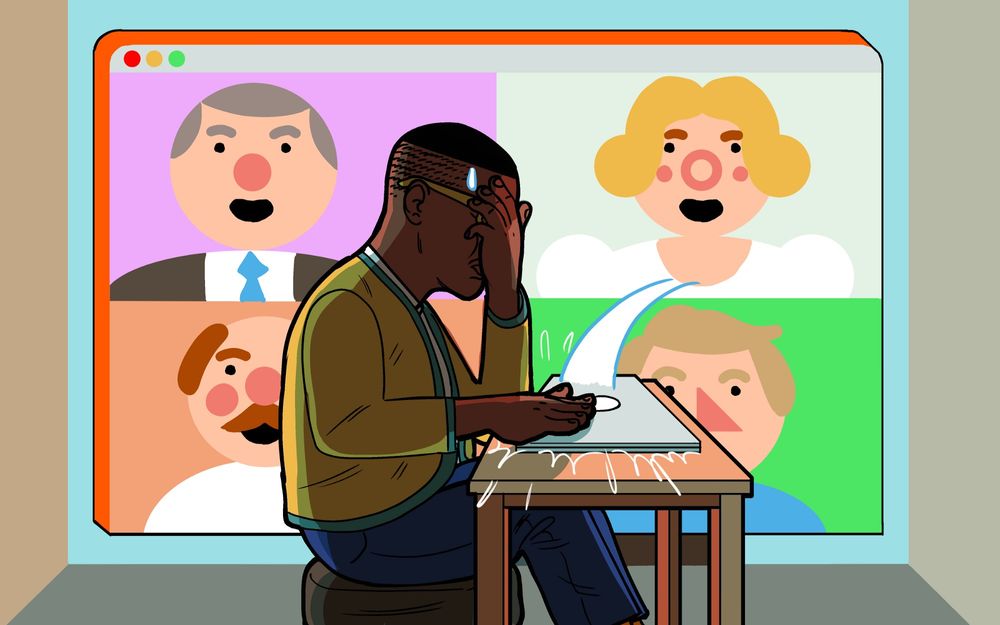For the first time in a long time, I’m happy with my current job. I have support from my higher-ups, a good deal of responsibility, and room for improvement, word to Drake. Still, at least once every year, I browse the job opportunities on LinkedIn to see what else is out there. I’ve done so ever since a friend who works in HR suggested making an effort to interview elsewhere annually — especially while I’m employed. For whatever reason, she said, many companies find poaching a prospect preferable to hiring someone who is unemployed. (It’s human nature, I guess, to want what someone else has. And you’ve got a built-in cosign.) Plus, even if you’re not considering a move, interviewing elsewhere is a great way to gauge your market value and how your industry is trending.
With this in mind, I’ve used February, the Blackest month on the calendar, as a chance to do some annual recalibration. Some years, I’ve been extended offers, which I’ve used to negotiate a better compensation package at the company where I was already working. Other times, I’ve jumped to the next opportunity, or at least received some unbiased feedback from a recruiter. All net positives. Yet having recently wrapped my first pandemic-era virtual interview, I’ve quickly learned remote interviewing is a very different ball game.
For starters, I took the video meeting from home, but I realized the way I presented myself would still matter. Call me conservative, but I rock a suit for any in-person interview; “business casual” has always sounded like a trap, and as a Black man I steer clear of any convention that could lead to my being judged unfairly. That said, it felt silly being all dressed up with nowhere to go in my own crib, so I went with a blazer worn over a casual but high-quality T-shirt.
Getting my setup right was trickier. As a plant dad, I knew my beautiful green children thriving in the background would make a positive impression. Not only do they display one of my interests, but I figured their vitality would suggest I’m at least responsible enough to follow simple lighting and watering guidelines. But that area of the apartment gets dim in the afternoon hours when the interview was set to take place, so I made like a YouTuber and invested in an affordable ring light. (Holy shit, these things are amazing!)
The day of the interview, I noticed how even though I had home-field advantage, the normal rhythms of an in-person interview were even more essential than I realized. Usually, my day-of strategy would entail me arriving at least 30 minutes prior and hunkering down in whatever coffee shop was nearby. I’d grab a small latte, go over talking points and responses to anticipated questions, and then arrive for my appointment 10 minutes early.
I’m already confident in my ability to make a great impression. But doing all of this with a camera in my face and multiple interviewers on the screen has made me even more cognizant of all the things I need to do to stick the landing.
Since I was already at the interview location, none of those customs were necessary. But they were still important. Remember how Dirk Nowitzki would hum David Hasselhoff songs to himself every time he prepared to shoot a free throw (the vast majority of which he’d sink)? Same principle — gotta get in the right headspace. Since Baywatch was never my thing, I recreated a version of my pregame ritual by dressing for the interview and walking to my neighborhood coffee shop 45 minutes before my scheduled appointment. I’d take a few sips of a latte outside of the shop before walking back home. There, I’d sit down at my desk and prep until 10 minutes before the call. Then I’d sign on five minutes before the interview was scheduled to start, to ensure the interviewer wouldn’t be waiting for me.
Maybe I was doing too much, but this hardly seems excessive in my mind. Ask any Black person about interviewing while Black, and you’ll probably hear some variation of the “twice-as-good” theory they were told growing up: We have to be twice as good to be considered equal to our White counterparts in the eyes of those with hiring power, who (surprise, surprise) also tend to be White people. This pandemic doesn’t change these rules, it just shifts them a bit.
I’m already confident in my ability to make a great impression, to communicate clearly, and respond creatively and thoughtfully to any question sent my way. But doing all of this with a camera in my face, multiple interviewers on the screen, part of my real life displayed in the background, and my hairline in the foreground has made me even more cognizant of all the things I need to do to stick the landing. Given that I’m just playing the field, I’m not even stressing the outcome of the interview — but at the very least I hope they remember the Black man they spoke to with the nice plants.
Read more: Coworkers, Please Don’t Make Black History Month Weird This Year
